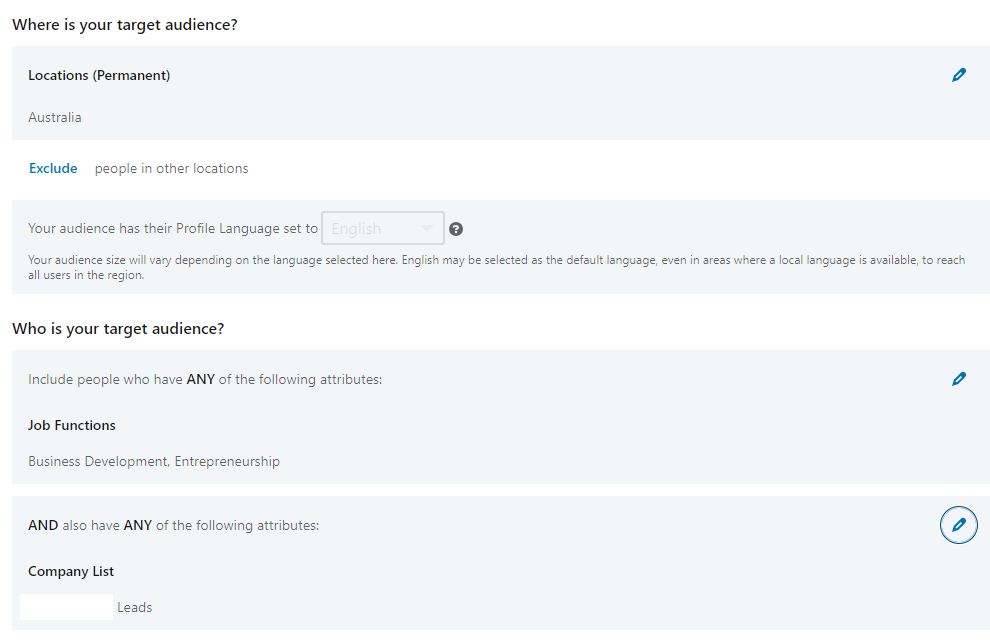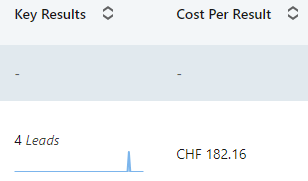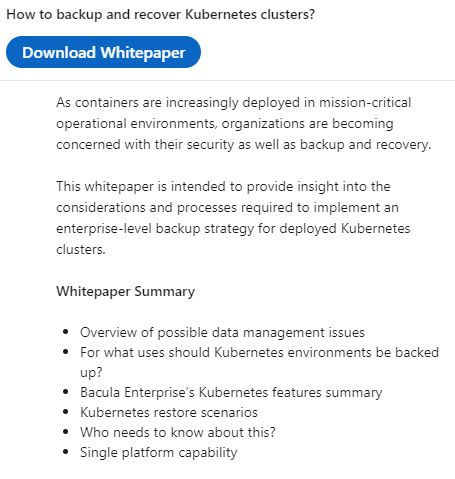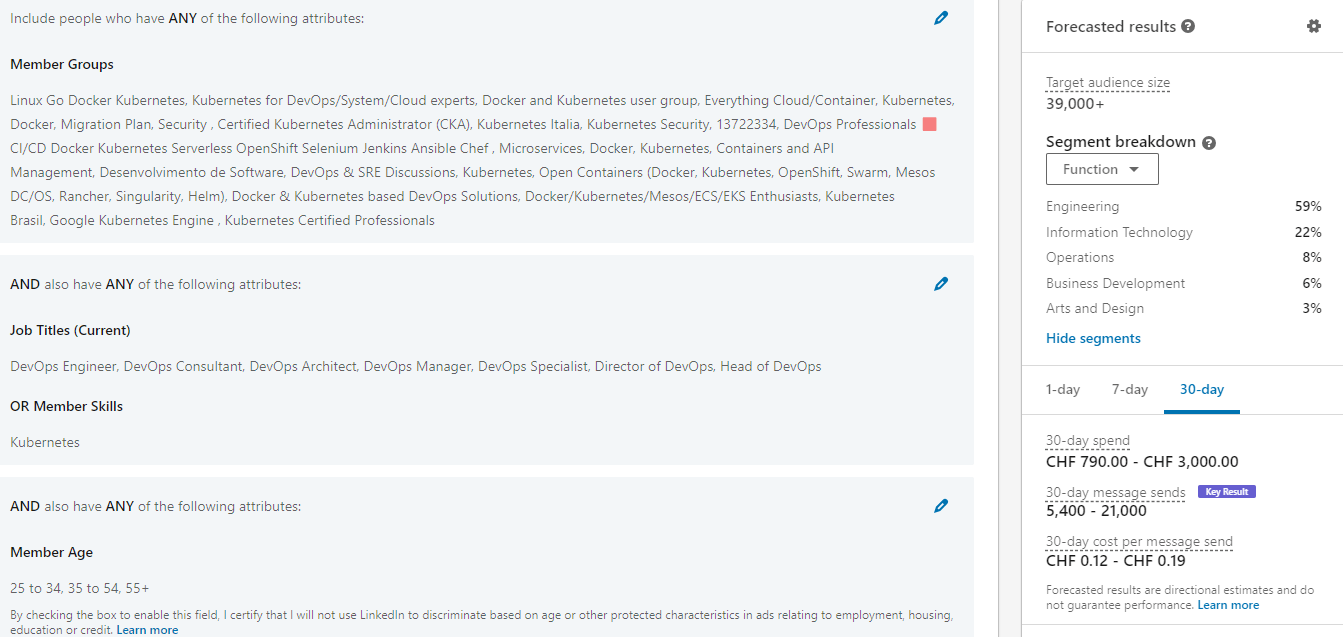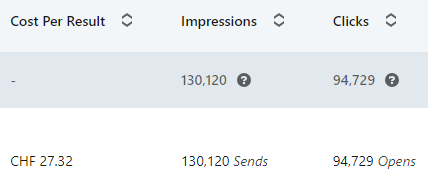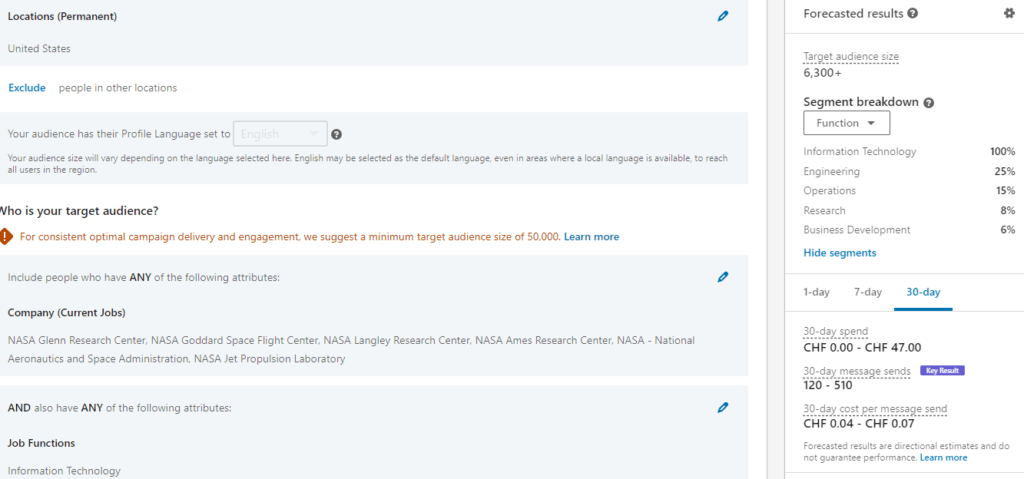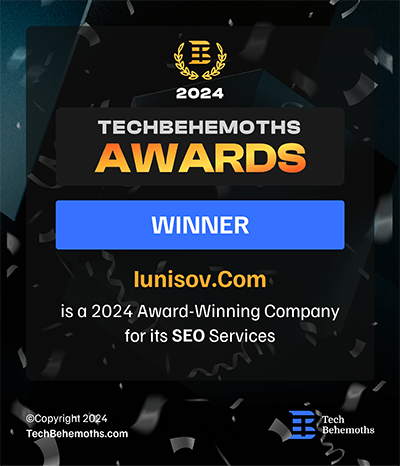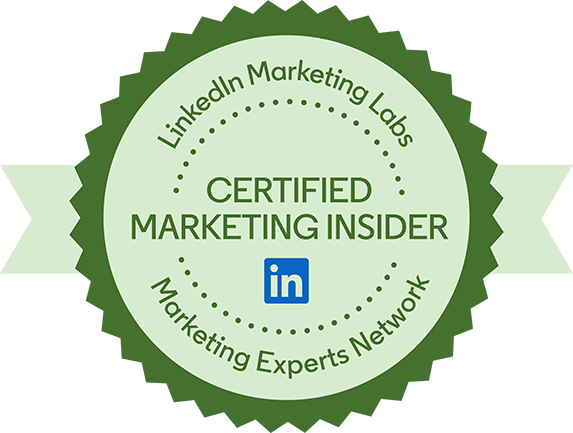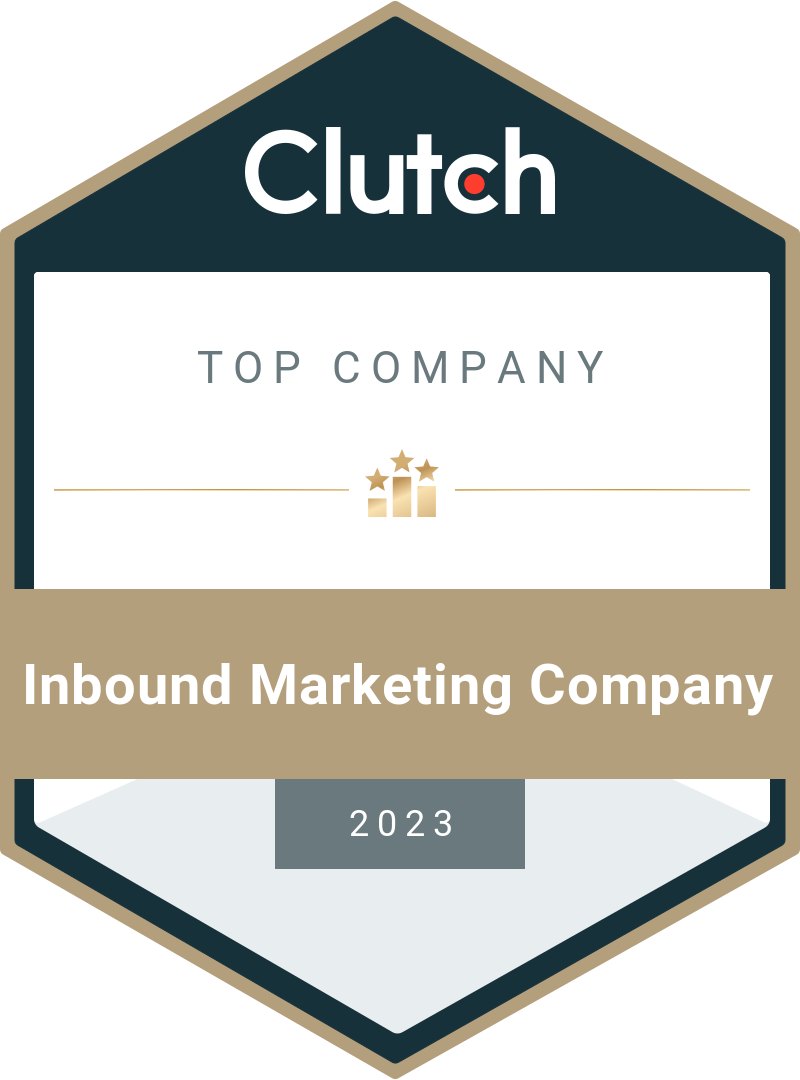Account-Based Marketing: Strategy, Tactics, Examples, and Success Stories in the Tech Industry.




 (6 votes, average: 4.92 out of 5)
(6 votes, average: 4.92 out of 5) Date : August 28, 2024 By Andrei Iunisov
Contents
Key Takeaways
- Account-based marketing (ABM) is a strategy that allows reaching high-value accounts.
- ABM drives greater ROI for marketing and faster deal closing for sales.
- Discover key tactics like aligning teams, personalizing outreach, and using multi-channel engagement.
- There’s a secret to mastering ABM—read on to explore real-life success stories and actionable insights!
Introduction to account-based marketing (ABM)
Selling B2B products or services directly to the buying center of the highest-value accounts that are the best fit for your business is a dream for practically any B2B marketer. However, a significant amount of marketing time is spent working with accounts that are less valuable, causing time and resource losses.
Account-based marketing can show surprisingly impressive results in many use cases. Demand Metric’s report claims that 71% of B2B businesses already use ABM or are interested in adopting it. The same source also states that 60% of ABM users who have been working with it for over a year have noticed a revenue increase in the company. Another piece from “ABM: State Of The Market” claims that the average annual contract value in companies that have implemented ABM tactics has increased up to 171%.
One of the biggest reasons ABM exists in today’s highly competitive B2B landscape. A generic approach to marketing for broad customer audiences is no longer enough to be at the top of the proverbial food chain, gathering attention from high-value accounts.
The definition of account-based marketing
Account-based marketing is a dedicated marketing approach that focuses on accounts with the most value (target accounts). ABM aims to provide each member of the buying center of the target account with a personalized experience during their customer journey, nurture the relationship with a specific account, and ultimately close new business with this account. The buying center of the target account is a group of sales decision-makers and sales decision influencers, which typically includes employees from C-level management, procurement, finance, and other departments.
There are five primary components that ABM strategies consist of (sometimes called the ABM framework):
- Targeting. It uses multiple data sources and methods to identify a small group of high-value accounts with the highest business sales potential.
- Research. Covers information gathering about every single account selected previously. The information in question includes goals, business challenges, decision-making processes, buying centers, and so on.
- Engagement. It revolves around establishing a dedicated relationship with each of the targeted accounts using multiple communication channels and forms of communication.
- Personalization. The creation of custom-tailored marketing content, including various messages and experiences that would be individual for each account.
- Analysis. It covers real-time analysis and report generation to monitor the performance of ABM in each separate situation.
Account-based marketing types
ABM strategies vary greatly by industry, developing account targeting parameters, delivery networks, campaign personalization and more. In the tech space, ABM is primarily directed to scenarios that require extensive decision-making and longer sales cycles. By contrast in the manufacturing sector, more focus or attention is given towards product specifications and supply chain relationships. When we talk about the financial sector, risk management and regulatory compliance stand out, since they are the most prominent concerns and pain points.
ABM itself can differ depending on the level of personalization. There are at least three ABM types that are commonly used in tech and other B2B industries:
- One-to-One ABM, also called Strategic ABM, uses the highest possible level of personalization, targeting a minuscule range of high-value enterprise accounts in most cases. One-to-One ABM revolves around creating a wealth of completely customized content for every single target account, including custom emails, whitepapers, ebooks, landing pages, webinars, offline events, etc. Even though this ABM type takes up the most resources out of the three, it is still the best option for large accounts in lucrative industries such as healthcare, enterprise technology, finance, manufacturing, etc.
- One-to-Few ABM is the “average” ABM type that is not as case-specific and personalized as the One-to-One ABM but also does not target a lot of accounts at once, like One-to-Many ABM tends to do. ABM Lite is at its most effective when used with segments or groups of accounts that have similar characteristics or pain points, making personalization slightly easier due to the ability to reuse parts of the content multiple times. It works with shorter sales cycles and manages to be surprisingly resource-efficient, considering how the entire marketing method revolves around custom content creation.
- One-to-Many ABM, sometimes also called Programmatic ABM, offers the least granular approach to personalization out of the three types. That’s not to say that there is no personalization to work with, which is far from it. Programmatic ABM relies on different tools and services to target relatively large groups of accounts at the same time. This approach is heavily dependent on automation platforms, digital marketing tools, and data analytics services that deliver most of the personalized content this method operates with. It can be quite effective with enough data since it uses a data-driven approach to content personalization.
Each of these types manages to offer a distinctive set of advantages and use cases, with Strategic ABM being the most granular and resource-intensive, One-to-Few ABM offering a decent balance between scalability and personalization, and Programmatic ABM taking advantage of various tools to reach a large selection of accounts with a slightly lower personalization level.
The advantages of account-based marketing
Streamlining the sales sequence
The sales process becomes much more efficient and focused with ABM since it enables both sales and marketing teams to align their efforts in the same direction – towards a small selection of high-value accounts. That way, every single step of the sales journey would be a lot more customized to the unique challenges of every target account.
ABM makes it possible to drastically reduce or outright eliminate the waste of effort that happens when following unqualified leads, focusing instead on a relatively small selection of much more promising target accounts. A significant emphasis on personalization implies that each prospect would know plenty of information about your company’s solution to their pain points as early as the beginning of the sales funnel, which dramatically shortens the overall sales cycle.
Additionally, the sheer volume of insights that can be gathered during the account research phase permits much more meaningful communication with the account, starting from the very first interaction. That way, the efficiency of the sales process is drastically improved, leading to higher conversion rates and faster deal closures.
Using account relationships as the means of business expansion
The primary motto of account-based marketing is “quality over quantity” due to its significant focus on high-value accounts. It does require a lot of resources for content creation, messaging delivery and relationship building, but the results of these investments can be significantly higher than for traditional marketing strategies.
By offering cross-selling opportunities and targeted upselling, ABM can be used to expand existing relationships within specific accounts. Creating highly personalized marketing campaigns that can address other problematic parts of the account’s business helps improve the relationship even after the initial sale process is completed.
For example, you have a client that purchased your backup solution in order to secure their databases. After the sale is complete, you learn that the company also struggles with regulatory audits and data compliance. What you can do here is to create a personalized marketing campaign showcasing how your solution would be helpful in these exact situations, with features such as audit trail, automated compliance reporting, and so on.
This is how you can reinforce the total value of the purchase for this client while also opening up a lot of doors toward additional purchases and generally deepening the relationship with the company in question.
It is one of many ways ABM can help your business remain at the forefront of the account’s mind, improving the chances for additional business opportunities when the account in question is expanding in a different department or suddenly needs an additional set of capabilities.
Aligning sales and marketing processes
Improved communication and regular collaboration directly translate into growth-oriented benefits for most companies. Account-based marketing is no exception to this rule since the successful alignment between the goals of marketing and sales teams provides multiple advantages.
ABM can align marketing and sales efforts by promoting collaboration at different points in the marketing process, such as account selection, messaging development, and content distribution. For example, sales can use the account intelligence gathered by marketing to fine-tune their outreach. At the same time, marketing would have a much easier time creating personalized content based on the insights about the customers’ pain points that the sales team provides.
How to measure the ROI
The ROI measurement is the primary way of ensuring that your ABM strategy is worth the time and resources. The fact that the number of personalized accounts in ABM is usually low also means that performing ROI measurements becomes much easier due to the lower volume of targets. The use of ABM drastically improves the potential of most marketing optimization techniques, providing the ability to improve the ROI and refine marketing strategies as time goes on.
As for the ROI calculation itself, it is relatively simple once you have all the financial information available on hand. For example:
-
- Let’s say that I want to calculate the ABM of a marketing campaign that targets 10 accounts in the tech field with a high value.
- This example is going to be completely artificial in order to show the formula, nothing else.
- My first step would be to calculate the total cost of the marketing investment, including:
- Advertising – targeted ads on different platforms – $2,000
- Content creation – personalized case studies, whitepapers, etc. – $4,000
- Sales outreach – calls, personalized emails, follow-ups, etc. – $2,000
- Miscellaneous – software, tools, other costs – $1,000
- The total investment at this step is going to be $9,000, as a combination of every single cost mentioned above.
- My next step would be to calculate the total revenue gained from these target accounts. Let’s say that only two of these ten target accounts resulted in a closed deal, with each deal being worth $15,000.
- That way, the total revenue gained from this marketing campaign is going to be $30,000.
- My last step would be to calculate the ROI itself using the information presented above. To do that, I would have to perform a three-step calculation:
- Subtract the total investment cost from the total revenue generated ($30,000 – $9,000).
- Divide that number by the total investment cost ($21,000 / $9,000).
- Multiply the resulting number by 100 to have the ROI as a percentage value (2.33 * 100).
- This is how I can calculate the ROI of that investment, which turned out to be 233%. The percentage value in question can also be directly translated back into the monetary value – since it means that every single dollar that was invested in the campaign earned us $2.33 in revenue, making this investment a resounding success.
If the ROI measurement proves positive, you can invest even more effort into nurturing target accounts to keep them as your clients (while gaining plenty of knowledge about potential future sales engagements with them).
Maximizing relevance for specific accounts
Personalization is one of the main pillars of account-based marketing. The process of ABM creates and delivers all forms of content for specific users, dramatically improving your business’s relevance in the eyes of target accounts.
There are many forms that personalization can take in the context of ABM. Here are some of the most common examples when it comes to personalized marketing content:
- Highly-targeted webinars
- Personalized email campaigns
- Custom-made eBooks or whitepapers
- Tailored video content
- Account- or industry-specific insights and reports
- Targeted landing pages
- Custom social media content
- Account- or industry-specific microsites
- Custom-made direct mail
- Industry-specific case studies
A properly formulated ABM strategy is capable of cutting through the many generic marketing messages to increase the brand’s relevance and engagement with the target audience via account- or industry-specific information.
How to select target accounts for ABM?
Even the most thorough understanding of the topic would not have any kind of effect if you are unable to select your target accounts correctly. It is the most fundamental element of any marketing strategy, not just ABM, and the proper selection strategy also differs significantly depending on multiple factors.
There are three sources for identifying and analyzing account targets for ABM that I consider to be the most effective:
Sales team selection
Leaving the question of account targeting to the sales teams is a viable option that is also relatively common in many cases. This method relies a lot on the intuition and experience of the sales teams that have to conduct online research to find companies that are the closest to their ideal customer profile.
Not only do they have to research the Internet as a whole, but there is also plenty of attention being paid to social media platforms such as LinkedIn due to their high aggregation of professionals. Another viable alternative is to research the public part of the client base of your competitors to try and find customers that might have pain points correlating with your product’s capabilities.
Website visitor tracking
Website visitor tracking capabilities can also offer a great source of potential leads who are already interested in your offer to a certain degree. Tools such as DealFront or Apollo can offer plenty of information on this exact topic, including the ability to identify exact accounts visiting your website, the information about what pages each account has visited and how many times, and even prioritization capabilities to filter out the leads with the highest possible engagement level.
Intent monitoring
Dedicated data analytics solutions such as Bombora (its data is also built-in in Apollo) can provide the results of extensive research to reveal organizations that have been researching specific topics that may be related to your product offering. These tools can detect surges in research activity, monitor online behavior across a massive number of research and review websites, and even offer insights into the areas of interest for each target account.
None of these methods are mutually exclusive, and combining them often offers a much more beneficial experience than using them separately. Experienced marketers often use all three of the account selection methods at the same time to achieve the largest possible number of high-value leads for bigger results.
Common ABM tactics
Personalized content generation
This method involves the creation of custom-fit content with a specific account’s pain points and challenges in mind. The content might include case studies, whitepapers, videos, or any other form of content that can demonstrate a thorough understanding of a specific issue in order to drastically improve customer engagement. Tools such as Seismic or Uberflip can be extremely advantageous when it comes to creating and delivering personalized content at a scale.
For example, a cloud security company I worked with has created a custom-tailored whitepaper for a specific target – a large financial institution. The whitepaper itself addressed a very specific range of pain points when it comes to compliance in the banking industry; it offered a range of case studies and statistics in order to prove the value of the cloud service to this specific institution.
Account-based retargeting
Digital advertising platforms like Google Ads or LinkedIn Ads can be used to retarget specific individuals across the whole web, keeping your brand at the forefront of an account’s memory. It helps reinforce key messaging, and can even be customized based on the engagement history of said account.
As an example from my career, I can remember a software provider that developed and distributed a SaaS project management tool. The service in question managed to identify key decision-makers in the software development company that was seen as a high-value client to them. A series of display ads was created afterward, with all ads highlighting specific features of the project management solution that addressed the pain points of the target company – with these advertisements being served to key decision-makers on different websites in Google Display Network, on social media platforms like LinkedIn and Reddit, and other resources.
Social selling personalization on LinkedIn
Invest in training your sales teams to engage with stakeholders from target accounts on LinkedIn (or Xing for German-speaking countries). Most traditional methods of building relationships on LinkedIn include invites with customized text, sharing relevant content through personal messages, commenting on target users’ posts while checking their latest activity, etc. All of this is necessary to build trust with the target account while also humanizing the entire sales process. Logically speaking, LinkedIn Sales Navigator would be a great solution here, and the same could be said for Hootsuite, LinkedHelper, and Apollo.
As for the career example in this situation, in order to offer a completely personalized approach, a sales representative from one AI-powered data analytics startup chose to connect with a potential client’s CTO directly on LinkedIn, striking a conversation while also sharing relevant information in the form of a relevant case study. The result of this conversation was a personalized demo of the solution, which eventually led to a high-value opportunity being generated.
Examples of content used in ABM
In the list below, I gathered some of the most commonly utilized content types that can be personalized for the purpose of ABM.
Customized landing pages
Centralize your personalization efforts by creating dedicated web pages built with specific accounts in mind. The pages in question should be able to adjust their content based on the account name, offering a highly personalized experience that should resonate with the customer.
I have used Instapage and Unbounce in different situations to both create and A/B test such bespoke landing pages. The example here would be the time when I created a customized landing page to target a very specific major telecommunications company.
The page in question was fine-tuned accordingly, with a client’s logo, a case study from a client in the same industry, and a number of industry-specific pain points and metrics to reinforce our value proposition. As a result, the conversion rates became 6% from the 2% we had on generic landing pages.
Advertisements on LinkedIn
LinkedIn can be used to drastically increase the chances of reaching decision-makers in each of the target accounts. The verified and professional audience of LinkedIn makes it a perfect source for ABM in the B2B sphere, especially when it comes to using various InMail ad campaigns, LinkedIn Lead Forms, and sponsored content pieces created with just one or several target personas in mind.
I once had to run a series of LinkedIn advertisements that targeted multiple C-level executives in the healthcare industry. My client was a middle-sized cybersecurity company, and it needed to highlight its HIPAA-related data discovery and protection capabilities, which I managed to do successfully in the aforementioned ads with the help of LinkedIn Campaign Manager. As a result, our click-through rates went up to 2.1%, and the number of leads increased by 20%.
Direct mail campaigns
Although the use of physical gifts or marketing materials might seem somewhat outdated today, it is still a viable method of standing out and cutting through the digital noise that generic marketing messages create. Direct mail’s effectiveness can increase even more when coordinated with digital touchpoints, and it can even be tracked using multiple examples of case-specific software, such as Sendoso or Reachdesk. For example, this marketing campaign for Outreach managed to double the marketing investment and $8 million in influenced pipeline by creating physical sends, such as holiday-specific packages (Valentine’s Day) or even simple celebratory emails combined with flower packages for specific prospects that have recently acquired a promotion or helped hit a company milestone.
Personalized email sequences
Modern marketing tools make it possible to develop entire email campaigns that are completely automated while still being targeted to specific roles or accounts. It is a surprisingly effective tool, as well, nurturing leads over time with the help of relevant offers and up-to-date content. Personalized email sequences make it possible to create a communication process with the customer that is both scalable and customizable. These entire sequences can also be simplified with the usage of software such as Outreach or Apollo.
At one point, I had to create a custom sequence of emails that targeted a set of prospects for a data visualization company. The campaign itself was used to showcase the capabilities of a tool when it comes to improving its quarterly reporting and investor reporting capabilities. The campaign itself managed to improve our click-through rates by up to 11%, and the personalization for emails made them far more likely to receive a reply (about 2.5% of emails were replied to, as a result).
Custom-tailored webinars and roundtables
Creating large-scale content, such as webinars or roundtables around specific pain points or challenges of industries or even single target accounts, is also an option. These events can be used to provide valuable insights to all attendees while also showcasing your company’s expertise on the subject. Account-specific events are an outstanding source of focused engagement opportunities with several accounts simultaneously, made possible by dedicated software: GoToWebinar, Zoom, etc. Such events can be recorded and become an “evergreen” source of leads in a specific industry.
At some point, I participated in organizing a virtual roundtable for CIOs from multiple target accounts for one of my client companies. The primary topic for this roundtable was the future of blockchain in banking, and a renowned industry expert was invited to join the discussion, providing plenty of value to each of the event participants. The number of follow-up requests for this event was moderately high, ranging at about 40% of all attendees being interested, and the roundtable itself had an engagement rate of over 70%, with plenty of visitors being involved in a conversation and participating in the event.
Website personalization for each account
Not only can landing pages be customized to show account-specific content, but it is also possible to personalize entire resources using a dedicated website personalization toolkit found in multiple solutions such as HubSpot or Optimonk. Being able to display case studies, whitepapers, or product recommendations that are relevant to a specific visitor of the website drastically improves the online experience of these accounts, making it much easier to convert them into leads. Moreover, displaying these materials selectively during the first, second, or following visits can gradually nurture the visitor to a conversion action on the website.
As an example, when a representative of one of my client’s target accounts landed on their website, they were shown a collection of tailored content during 3 consecutive visits (infographic, ebook, and TCO calculator) showcasing how my client’s cloud infrastructure offering can help the client’s business during peak traffic periods without interruptions.
Generation of short personalized videos
Video content can be a great help when it comes to personalized messaging. Recording short video messages tailored to specific stakeholders does not take too much effort and is extremely useful when it comes to social selling or email outreach. The very nature of video content makes it easier for your business to stand out across traditional text messaging, which boosts overall engagement. There are a lot of different software that might help with creating personalized video content, including solutions such as Loom or Vidyard.
For example, this vendor’s YouTube channel has plenty of videos that can be used as a form of personalized content in different industries. They are short and cover the pain points of a specific field of work, including, but not exclusive to:
- High-Performance Computing Backup – Bacula for High Performance Computing
- Backup Policies – Bacula Backup Policies Explained
- Ransomware Protection – How to Protect Your Data from Ransomware?
What are the typical examples of using ABM in tech marketing?
Since my primary ABM expertise shines with B2B technology companies, I will provide example strategies from this industry. However, you can easily customize these tactics to your own landscape. Here are my top five account-based marketing strategy examples in the technology industry:
Enterprise Sales
Many technology companies target large enterprises as their primary customers. ABM is highly effective in this context because it allows tech marketers to focus on building relationships with key decision-makers and buying centers within these large organizations. Personalized content, direct outreach, and tailored campaigns can address each enterprise account’s needs and challenges.
Here is an ABM strategy example focused purely on acquiring a single account from Australia’s defense industry as a customer:
We are targeting 530 employees in target regions without narrowing them down by title or function just because the audience will be too small and LinkedIn won’t launch the campaign. Here is what the ad looked like:
The advertisement included a brief headline and a direct call-to-action. The download button leads to the LinkedIn leadgen form that looks like this:
It collected several basic parameters to ensure that the leads can be qualified down the line, including work emails, work phone numbers, etc. Here are some results:
182 CHF per lead might sound a bit expensive for a regular campaign. Still, it is a typical result for a hyper-targeted one, especially considering the overall cost of the campaign. The rest of the metrics for this advertisement are:
- Total sends: 10,784
- CTR: 3% (326 clicks in total)
- Form completions: 4
- Conversion rates: 1.33%
- Total cost of the campaign: 728 CHF
While the conversion rates seemed somewhat low, their average quality justifies the effort and budget it took to obtain them. Once the leads were obtained, we took all the necessary steps to engage with them, from initial lead qualification to personalized outreach via email and phone from our sales team.
As a result of these efforts, there has been one scheduled meeting with our product’s demo being conducted and the sales opportunity being acquired.
Channel Partnerships
Tech companies may use ABM tactics to identify and engage with potential channel partners, such as resellers or distributors. They can target accounts that align with their partner program and work to build mutually beneficial relationships.
Here is an ABM marketing example on LinkedIn, targeting channel partners of a well-known backup and recovery vendor:

We have targeted Norway only, where I created a list of potential partners based on the competitive vendor’s partner section on the website. This company list was uploaded to LinkedIn and added to the target audience, which was narrowed down to only IT job functions in these organizations. The message was translated to Norwegian:

Here is what I got:
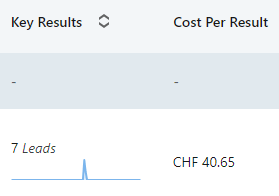
We did not get many leads, but enough to initiate potential regional partnership discussions. The overall cost of the partner generation campaign was 285 CHF. The remaining metrics for this advertisement were as follows:
- Total sends: 8,407
- CTR: 2.5% (200 clicks in total)
- Form completions: 7
- Conversion rates: 3.5%
- Total cost of the campaign: 285 CHF
The conversion rate of 3.5% showcased a moderate level of engagement and plenty of interest from targeted channel partners. All the necessary follow-up steps were taken after this campaign was finished, including lead qualification, personalized outreach with customized emails and phone calls, and the following partnership meetings with technical and business development teams.
As a result of this campaign, five meetings have been scheduled afterward, with three clients agreeing to a partnership.
Product Launches
When launching a new tech product or solution, ABM can be used to create excitement and anticipation among a select group of target accounts. Marketers can tailor their pre-launch and launch campaigns to generate interest and demand among these accounts.
This is what my client has done when releasing their innovative Kubernetes backup module:
We targeted the following audience:
The results were impressive, here is what I can demonstrate:
The number of leads exceeded a thousand, while the cost-per-lead was kept under 30 CHF. The average CPL for the industry over the last few years has been $310 for paid leads and $164 for organic ones (according to Statista). A CHF 27.32 is slightly above $32 USD, which makes it an impressive result, all things considered.
The click-through rate of 12.8% is considered a substantial result, as well, indicating a significant interest of the target audience to the topic in question.
Once the campaign has been completed, we have performed the essential sequence of further steps: lead qualification, custom emails for personalized outreach, calls, and product demo showcases.
Account Expansion
ABM is not limited to new customer acquisition; it can also be used to expand relationships with existing customers. Tech companies can identify opportunities for upselling, cross-selling, and providing additional value to their current customer base.
Here is an example of the ABM campaign on LinkedIn targeting several NASA research centers from a backup and recovery vendor already having a contract with them:
As you can see, we targeted 6300 NASA employees across several NASA centers with IT job functions.

Our messages included IT whitepapers about technologies (MS SQL, Proxmox, Kubernetes) presumably used in NASA labs as well as the disaster recovery plan template.

We sent out 430 messages only, received 208 opens, and several leads with a 200 CHF / lead cost. The total open rate of 48.4% presents a high level of interest among the target audience. All of the leads have also been followed up appropriately after the campaign, including different elements of personalized outreach tactics, customized solution proposals for each lead, and continuous engagement to move the leads further down the sales funnel.
Vertical-Specific Campaigns
Tech marketers often run ABM campaigns tailored to specific verticals or industries, such as healthcare, finance, or manufacturing. These campaigns address the unique challenges and regulatory requirements of each industry.
Here is an example focused on defense & military sector:
65000 defense & military IT professionals (sysadmins & CIOs) in the UK, Australia, Canada and the USA were in the target audience of this campaign. Here is the message:

Generating leads in defense industry is always a challenge, but here we got some decent results:
Less than 200 CHF for a quality lead from a defense & military sector in these locations can be considered a good result. The total open rates of 51.1% show how the overall campaign has succeeded, with multiple leads being acquired in the process. The nurturing processes for these leads have also been a success, generating several calls with product demos.
Conclusion
In closing, account-based marketing has quickly become a complete game-changer in the B2B and tech business environments. The focus on quality leads instead of pursuing their quantity has improved the overall resource management and freed up more resources to personalize the content for every single high-value lead when necessary.
ABM offers something of a framework for creating connections with key accounts and decision-makers, and I went over plenty of different content forms in this article to show how many options there are to choose from.
I hope that this article has offered enough knowledge about account-based marketing on LinkedIn for you to see its value. It can be highly beneficial if done right, and several key takeaways are worth repeating here:
- Aligning your sales and marketing teams is the first big step towards proper ABM execution; it is challenging to perform without both teams being aware of each other’s actions and plans.
- Being as specific in your goals and targeting as possible is an advantage for ABM, which thrives in highly specific use cases with a limited selection of customers for targeting.
- LinkedIn is one of the more promising social media platforms for account-based marketing due to its broad advertising capabilities.
- There are plenty of highly specific software examples that can assist in scaling the personalization efforts, but they do require a certain level of skill to master.
- Thorough and detailed targeting is another significant advantage of LinkedIn ABM campaigns. It allows for more effective audience research, better conversions, higher success rates, etc.
- Content personalization can take a myriad of different forms, from traditional physical mail to micro websites that are completely personalized from start to finish. Picking the correct type of content to work with is one of the most significant challenges of ABM, but the returns of this strategy are incredible when done correctly.
Account-based marketing can be slightly overwhelming, especially when launching it alongside other marketing strategies. Starting with a small selection of high-value targets and expanding your efforts as time passes is the preferred strategy for this approach in most situations. This also simplifies the integration process and makes it easier for the marketing teams to get used to the different features and specializations of ABM.
